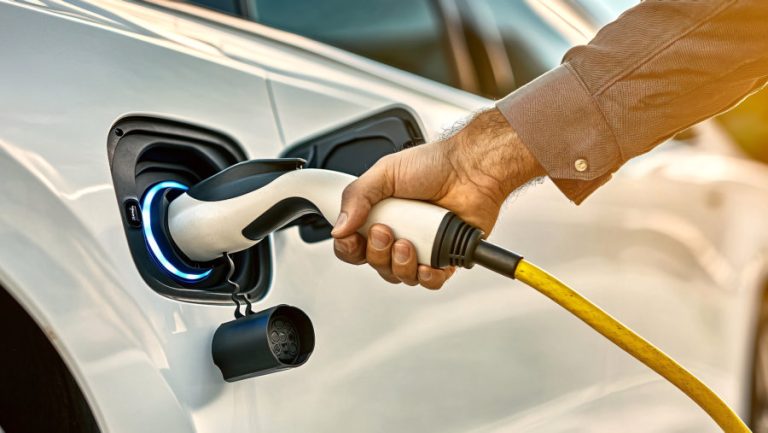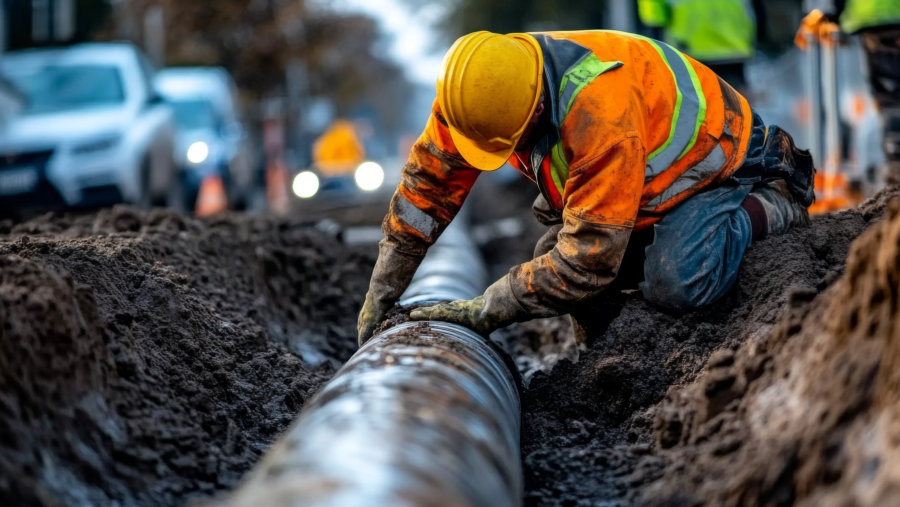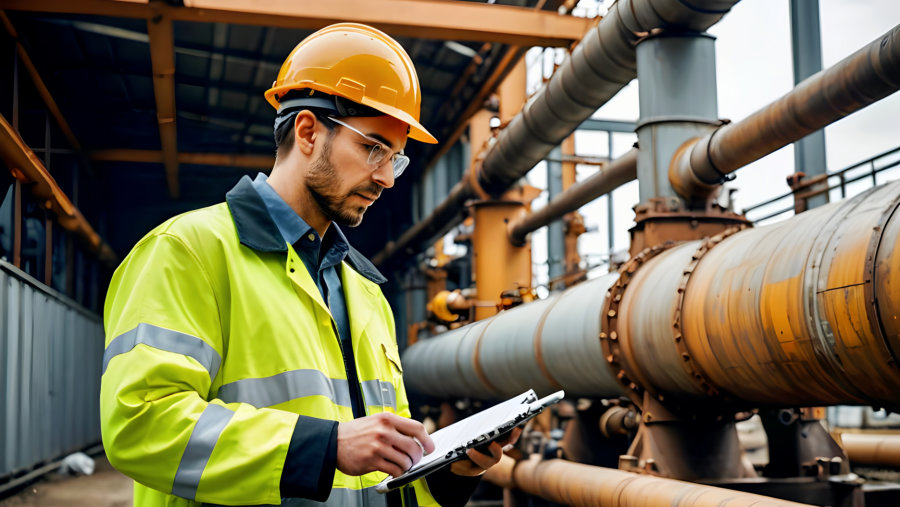

Fuelling the Shift to a Sustainable Future
As Australia transitions towards a net zero future, gas continues to play a crucial role in ensuring grid reliability. This shift raises an important question:
How can gas evolve to support the energy transition?”
With growing reliance on wind and solar, flexible, peaking, and mid-merit gas technologies are becoming critical for balancing the grid. Together, these generation systems act as a stabilising force, ensuring that power is available when renewable output drops due to weather variability or sudden demand surges.
Gas-powered electricity generation is shifting towards a more seasonal and “peakier” profile, ensuring stability during extreme weather conditions and periods of low renewable output.
Peaking gas plants offer rapid start-up times, making them ideal for covering shortfalls, while mid-merit gas provides a flexible bridge between baseload and peak demand, supporting grid security over longer durations.
However, with this increasing reliance on flexible gas generation, Australia’s energy infrastructure must evolve. The question remains:
Is the existing infrastructure prepared for an increase in demand to 14GW* in flexible gas as mid-merit gas retires?
*AEMO 2024 Integrated System Plan Overview
Hear from executives as they share how Verbrec enables sustainable markets and the energy transition.
The BIG Picture
Why Gas Still Matters…
Gas plays a key role in stabilising the grid and supporting the integration of renewables.
It remains a crucial energy source for industrial applications, firming electricity supply, and acting as a safety net when renewable output fluctuates.
Without gas, the transition to renewables simply isn’t possible without introducing grid instability and reliability issues.
The Challenge:
Rethinking Gas Systems
CHALLENGE #1
Utilisation
Monetising Intermittent Gas Use
Gas will be used intermittently rather than continuously, creating challenges in pricing and investment.
How can companies be compensated fairly for gas in a backup role?
Companies can be fairly compensated for backup gas supply through several mechanisms:
1. Capacity Payments
Payments for maintaining standby supply, ensuring infrastructure remains operational even if not used (“Consultation Paper – Stage 2 of the Reliability and Supply Adequacy Framework,” Australian Energy Market Operator (AEMO), 2023).
2. Availability Contracts
Agreements compensating suppliers for guaranteeing gas availability during peak demand (“Consultation Paper – Stage 2 of the Reliability and Supply Adequacy Framework,” Australian Energy Market Operator (AEMO), 2023).
3. Reserve Market Mechanisms
A supplier of last resort model allowing cost recovery when backup supply is needed (“Consultation Paper – Stage 2 of the Reliability and Supply Adequacy Framework,” Australian Energy Market Operator (AEMO), 2023).
4. Market-Based Pricing
Indexed pricing models linked to LNG netback pricing or cost-sharing among users benefiting from backup supply (“Future Gas Strategy Analytical Report,” Department of Industry, Science and Resources, Commonwealth of Australia, 2024).
5. Government Incentives
Financial support or regulatory mechanisms to sustain standby capacity where market solutions fall short (“Consultation Paper – Stage 2 of the Reliability and Supply Adequacy Framework,” Australian Energy Market Operator (AEMO), 2023).
These strategies ensure fair compensation while maintaining system reliability.
CHALLENGE #2
Repurposing
Reimagining Gas Networks
Gas infrastructure is shifting from steady supply to on-demand usage.
What happens to existing gas pipelines and storage
facilities?
facilities?
The transition of gas infrastructure from steady supply to on-demand usage raises critical questions about the future of existing pipelines and storage facilities. Key strategies include:
1. Repurposing for Hydrogen and Renewable Gases
Existing pipelines may be retrofitted to transport hydrogen or biogas, aligning with decarbonisation efforts (“Future Gas Strategy Analytical Report,” Department of Industry, Science and Resources, Commonwealth of Australia, 2024).
2. Seasonal and Peak Demand Storage
Storage facilities will play a crucial role in balancing fluctuating gas demand, ensuring supply during peak periods (“2024 Gas Statement of Opportunities (GSOO) Report,” Australian Energy Market Operator (AEMO), 2024).
3. Pipeline Reconfiguration for Bi-Directional Flow
Some transmission networks, originally designed for one-way flow, are being reconfigured for bidirectional use to improve flexibility and market responsiveness (“2024 Gas Statement of Opportunities (GSOO) Report,” Australian Energy Market Operator (AEMO), 2024).
4. Integration with Electricity Markets
Gas networks will increasingly support electricity reliability by providing backup supply during periods of high renewable variability (“2024 Electricity and Gas Networks Performance Report,” Australian Energy Regulator (AER), 2024).
5. Potential Asset Stranding
As gas demand declines due to electrification and policy shifts, some infrastructure may become underutilised or require decommissioning (“2024 Electricity and Gas Networks Performance Report,” Australian Energy Regulator (AER), 2024).
These approaches ensure gas infrastructure remains viable while adapting to a more dynamic energy landscape.
CHALLENGE #3
Peak Demand
Managing Gas Storage
Innovative storage solutions are needed to handle sudden surges in demand.
How can the gas grid support peak demand without relying on traditional infrastructure?
To support peak demand without relying solely on traditional gas infrastructure, several innovative storage and supply solutions are being explored:
1. Deep and Shallow Gas Storage Expansion
Increasing the capacity and flexibility of underground gas storage facilities ensures rapid response during peak demand. Deep storage sites like Iona Underground Gas Storage (UGS) and shallow storages such as Newcastle Gas Storage are crucial for short-term injections (“2024 Gas Statement of Opportunities (GSOO) Report,” Australian Energy Market Operator (AEMO), 2024).
2. Optimised Seasonal Storage Management
Maintaining high inventory levels in underground gas storage facilities ahead of winter prevents depletion during peak periods, improving resilience against supply shortfalls (“2024 Gas Statement of Opportunities (GSOO) Report,” Australian Energy Market Operator (AEMO), 2024).
3. Flexible LNG Import Terminals
Floating storage and regasification units (FSRUs) can provide rapid injection capability, ensuring gas availability during winter months when traditional supply chains are strained (“2024 Gas Statement of Opportunities (GSOO) Report,” Australian Energy Market Operator (AEMO), 2024).
4. Pipeline Linepacking
Using pipelines to store additional gas by increasing pressure helps manage short-term fluctuations in demand and enhances network flexibility (“2024 Gas Statement of Opportunities (GSOO) Report,” Australian Energy Market Operator (AEMO), 2024).
5. Demand-Side Management
Implementing incentive programs to reduce industrial and commercial gas consumption during peak periods can help alleviate supply pressures without requiring additional infrastructure (“2024 Gas Statement of Opportunities (GSOO) Report,” Australian Energy Market Operator (AEMO), 2024).
6. Hydrogen and Renewable Gas Blending
Integrating hydrogen and biomethane into existing gas networks can diversify supply sources and improve energy security during peak demand events (“2024 Gas Statement of Opportunities (GSOO) Report,” Australian Energy Market Operator (AEMO), 2024).
These approaches offer a multi-faceted solution for managing peak demand while reducing reliance on traditional gas infrastructure.
Verbrec Insights
Our Thinking

Gas as a ‘Battery’: An Evolving Role in Energy Systems



FAQs
Perspectives from Industry Experts
1. What is the gas transition, and why does it matter?
The gas transition refers to moving from conventional natural gas to low-carbon alternatives like green hydrogen and biomethane. This shift is essential for reducing emissions and aligning with net-zero targets. While natural gas still plays a role in energy security, increasing demand for renewables is driving investment in cleaner gas alternatives.
2. What role will green hydrogen or biogas play in replacing natural gas?
Green hydrogen, produced via electrolysis using renewable energy, and biogas, generated from organic waste, are key alternatives to natural gas. However, biogas production in Australia is limited by feedstock availability, making it more viable for industries where electrification is impractical. Hydrogen, particularly green hydrogen, is expected to play a greater role in industrial heat applications and export marketsfuture.
3. How will large-scale energy consumers manage gas needs when multiple clients require gas simultaneously?
Industrial and mining operations consume significant amounts of gas, often for high-heat processes. To manage simultaneous demand, companies are adopting:
- On-site generation (e.g., behind-the-meter electricity from gas-powered generation).
- Demand-side management to reduce peak consumption.
- Integration with renewable sources, especially hydrogen and biomethane for processes that allow fuel switching.
4. How are energy prices expected to change during the transition?
Gas prices will remain volatile during the transition. In the short term, higher international LNG prices may incentivise Australian gas producers to prioritise exports over domestic supply, potentially increasing local costs. However, over the long term, increased renewable energy integration is expected to stabilise prices as reliance on fossil fuels decreasesfuture.
5. How competitive is Australia against global markets?
Australia is well-positioned in the global energy transition due to abundant renewable energy resources, strong LNG infrastructure, and increasing hydrogen projects. However, competition from other nations developing green hydrogen and biogas at scale, such as Japan and Europe, may influence Australia’s export competitiveness.
6. Will the global shift away from gas reliance impact Australia’s position as a major exporter?
Yes, Australia’s position as a major LNG exporter will be challenged as global demand shifts toward low-emission fuels. Over 98% of Australia’s gas exports go to economies with net-zero targets, meaning long-term demand for LNG could decline. To remain competitive, Australia is investing in green hydrogen and ammonia export capabilities.
Our Experience
Featured Case Studies
Verbrec brings over 30 years of experience in gas systems design, maintenance, and enhancement. Our full-lifecycle capabilities in engineering, construction, operations, and management support innovative projects advancing the gas transition.
Let’s Enable a Sustainable Future Together
Contact us to learn more about how we can help prepare you for ‘The Gas Transition’.